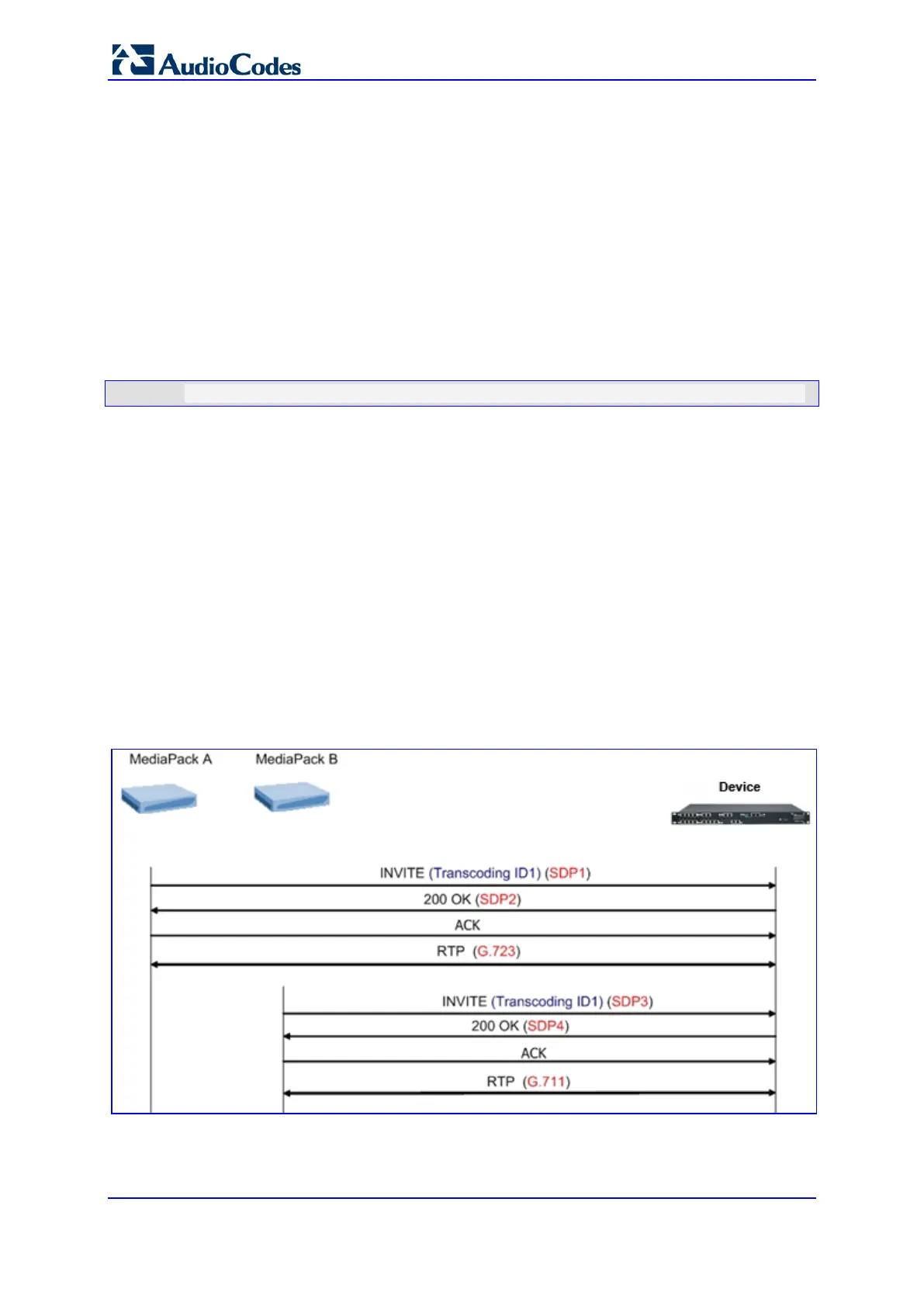SIP User's Manual 474 Document #: LTRT-83310
Mediant 600 & Mediant 1000
21.2 Using RFC 4240 - NetAnn 2-Party Conferencing
Transcoding bridges (or translates) between two remote network locations, each of which
uses a different coder and/or a different DTMF and fax transport types. The device
supports IP-to-IP transcoding. It creates a transcoding call that is similar to a dial-in, two-
party conference call. The SIP URI in the INVITE message is used as a transcoding
service identifier. The transcoding identifier is configured using the 'Transcoding ID'
parameter (TranscodingID) in the IP Media Settings page (see 'Configuring the IP Media
Parameters' on page 411)..
It is assumed that the device is controlled by a third-party, Application server (or any SIP
user agent) that instructs the device to start an IP transcoding call by sending two SIP
INVITE messages with SIP URI that includes the transcoding identifier name. For example:
trans
123@audiocodes.com SIP/2.0
The left part of the SIP URI includes the transcoding ID (the default string is ‘trans’) and is
terminated by a unique number (123). The device immediately sends a 200 OK message in
response to each INVITE.
Each of the transcoding SIP call participants can use a different VoIP coder and a different
DTMF transport type, negotiated with the device using common SIP negotiation.
Sending a BYE request to the device by any of the participants, terminates the SIP session
and removes it from the Transcoding session. The second BYE from the second participant
ends the transcoding session and releases its resources.
The device uses two media (DSP) channels for each call, thereby reducing the number of
available transcoding sessions to half of the defined value for MediaChannels. To limit the
number of resources for transcoding, use the 'Number of Media Channels' parameter
(MediaChannels) in the IP Media Settings page (see 'Configuring the IP Media Parameters'
on page 411). For example, if 'Number of Media Channels' is set to "40", only 20
transcoding sessions are available.
The figure below illustrates an example of a direct connection to a device:
Figure 21-1: Direct Connection (Example)

